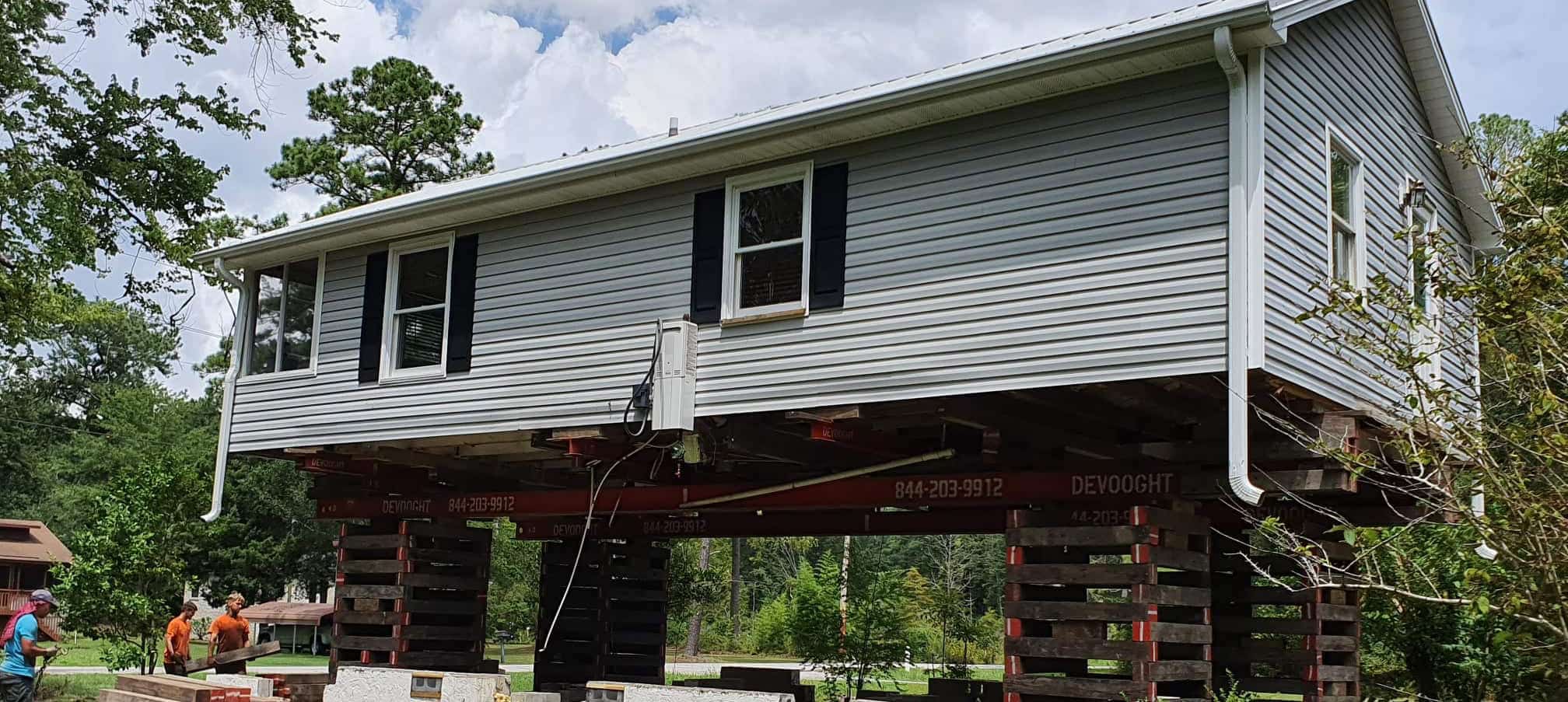It is no secret that lifting a home requires significant resources: time, energy, and, of course, money. Many homeowners ask the question, “Is it worth it?” The short answer is yes! Read on to learn why.
Lifting Your House to Save It
While many variables can affect the cost and time commitment of a house lift, lifting your home will protect it –– and everything inside it –– from unpredictable, uncontrollable natural events.
FEMA estimates that one inch of flooding can cause up to $25,000 in damage in a typical home. In the long run, a lift will save you the money and the hassle of repairing flood damage. In addition to preventative action, a lift can increase your home’s value.
Read on to see what factors to consider when assessing the cost and investment of lifting your home.
Factors That Affect the Cost of Lifting Your Home
Many steps are involved in house lifting. The event requires planning, permits, contractor evaluations, and a team of professionals with the equipment and expertise to execute your lift.
Each step and component take financial investment, and expenses can vary based on the location, age, size, shape, height, and house condition. Sometimes, unexpected costs come up when damages are found, such as cracks in the foundation, that need to be fixed.
Some homeowners also take the opportunity to remodel or update parts of their homes during this process, which can also affect the price you choose to budget. Some process elements are at the owner’s discretion, but many are not. Knowing what to expect and planning for surprise fees is essential when starting the house-lifting process. The best way to prepare for budgeting costs is to consult a house-lifting contractor.
Mitigating Risk and Preventing Damage to Your Home
With every investment comes uncertainty; lifting your house is the same. You can’t know how much money you will save without knowing exactly how many storms and floods your home will experience and the severity of the calamities.
Home lifting may come with a high upfront cost, but it also prevents and minimizes some of the most expensive damages you will face as a homeowner: water damage and foundation issues. Lifting a home requires the foundation to be intact and will add reinforcements to protect it even further, and the higher the primary living area is, the less risk there is for serious harm to come to your home and belongings.
Lifting Your Home is an Opportunity to Add Space and Increase Its Value
The value of lifting your home is not found only in what it prevents. A house lift increases your home’s value.
When you lift your home, you create additional living or recreational spaces. Many homeowners use this time to add a basement or an additional floor, increasing the house’s square footage. A lift for a home within a flood zone can decrease insurance premiums, saving homeowners hundreds or thousands per year. Adding to your home’s square footage will ultimately increase its resale value and make for a more enjoyable space.
Flood Insurance is Good, But It May Not Be Enough
Flood risk is not limited to coastal areas; where there is rain, there is the potential for flooding. Many people don’t realize that homeowners insurance does not cover flood damage. Even those with flood insurance may be responsible for a deductible based on their home’s dwelling coverage limit.
Even if you think you are protected financially, the best way to protect yourself from the hidden fees that come with repairs is to prevent them where possible. Lifting your home can offer more protection than insurance alone, preventing much of the hassle of filing claims and repairing the damage.
Financial Assistance May Be Available to You
Government programs are available that provide funding to communities and states to mitigate flood damage. The government preserves resources when individuals and groups take non-emergent measures to prevent damages and lessen the effects of natural disasters. Visit the FEMA website to see if you qualify for Flood Mitigation Assistance grants.
Conclusion
Homeowners must assess their home’s risk factors and finances to determine whether lifting their home is a wise choice. Ultimately, this investment will protect your home from unforeseen disasters and ensure a stable foundation.
When considering lifting your home, money is a big part of the decision, but it is certainly not the only thing to consider. You cannot put a price on feeling safe and secure in your home and can’t replace photos and sentimental items. Lifting your home is one of the best decisions you can make to invest in the value of your home and ensure the safety of your family and belongings.

